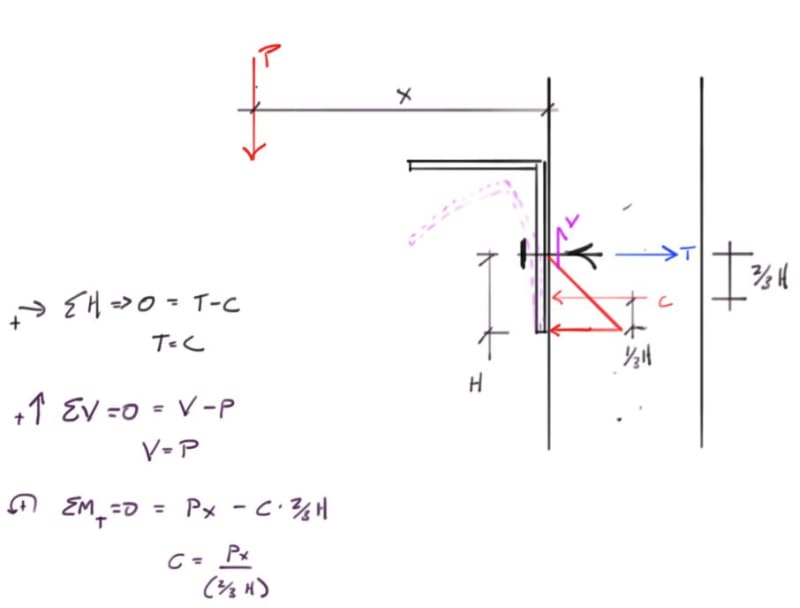Good Morning fellow engineers,
I am working on angle bracket design which will be attached to concrete wall with expansion anchor bolts (as shown in attached PDF).
Here is what I am planning to do.
As there is a eccentric out of plane load acting on bracket, it is going to try to pivot about the bottom edge
(I understand if we have more than one rows, then we take the neutral axis at the centre of bolt group case 2).
Based on the assumption it is pivoting about the bottom edge (please correct me if my assumption is wrong)
I will get the shear force and tensile force on anchor bolt as shown in calculations.
Now all I need to do is design my acnhors based on that
(Concept remains same whether it was anchor or any other bolt, Only difference is in anchor bolt, I will have to check anchor pullout, base material splitting, base material failure etc as well)
Am I missing something?
We do not use hilti so I can not use profis and the dewalt software do not let u put load at eccentric position
Thank You very much
kaffy
I am working on angle bracket design which will be attached to concrete wall with expansion anchor bolts (as shown in attached PDF).
Here is what I am planning to do.
As there is a eccentric out of plane load acting on bracket, it is going to try to pivot about the bottom edge
(I understand if we have more than one rows, then we take the neutral axis at the centre of bolt group case 2).
Based on the assumption it is pivoting about the bottom edge (please correct me if my assumption is wrong)
I will get the shear force and tensile force on anchor bolt as shown in calculations.
Now all I need to do is design my acnhors based on that
(Concept remains same whether it was anchor or any other bolt, Only difference is in anchor bolt, I will have to check anchor pullout, base material splitting, base material failure etc as well)
Am I missing something?
We do not use hilti so I can not use profis and the dewalt software do not let u put load at eccentric position
Thank You very much
kaffy

